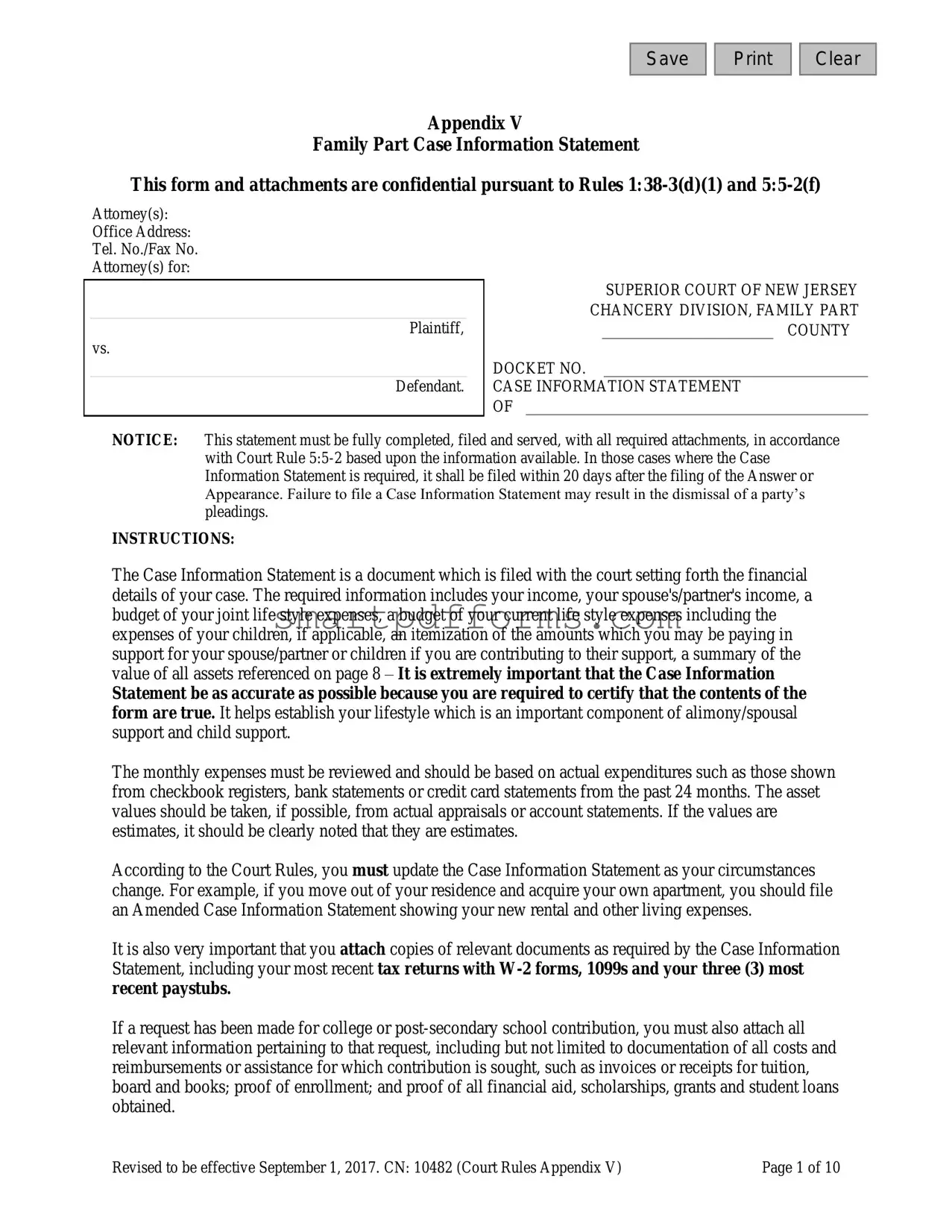Part F - - Statement of Special Problems
Provide a Brief Narrative Statement of Any Special Problems Involving This Case: As example, state if the matter involves complex valuation problems (such as for a closely held business) or special medical problems of any family member, etc.
Part G - Required Attachments
Check If You Have Attached the Following Required Documents
1. A full and complete copy of your last federal and state income tax returns with all schedules and attachments. (Part C-1)
2. Your last calendar year’s W-2 statements, 1099’s, K-1 statements.
3. Your three most recent pay stubs.
4. Bonus information including, but not limited to, percentage overrides, timing of payments, etc.; the last three statements of such bonuses, commissions, etc. (Part C)
5. Your most recent corporate benefit statement or a summary thereof showing the nature, amount and status of retirement plans, savings plans, income deferral plans, insurance benefits, etc. (Part C)
6. Affidavit of Insurance Coverage as required by Court Rule 5:4-2(f) (Part B-3)
7. List of all prior/pending family actions involving support, custody or Domestic Violence, with the Docket Number, County, State and the disposition reached. Attach copies of all existing Orders in effect. (Part B-5)
8. Attach details of each wage execution (Part C-5)
9. Schedule of payments made for a spouse or civil union partner and/or children not reflected in Part D.
10. Any agreements between the parties.
11. An Appendix IX Child Support Guideline Worksheet, as applicable, based upon available information.
12. If a request has been made for college or post-secondary school contribution, all relevant information pertaining to that request, including but not limited to documentation of all costs and reimbursements or assistance for which contribution is sought, such as invoices or receipts for tuition, board and books; proof of enrollment; and proof of all financial aid, scholarships, grants and student loans obtained. A list of the information as promulgated by the Administrative Director of the Courts can be found on the Judiciary website.
I certify that, other than in this form and its attachments, confidential personal identifiers have been redacted from documents now submitted to the court, and will be redacted from all documents submitted in the future in accordance with Rule 1:38-7(b).
I certify that the foregoing information contained herein is true. I am aware that if any of the foregoing information contained therein is willfully false, I am subject to punishment.















